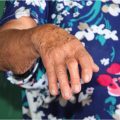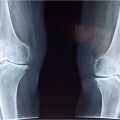Most people with rheumatoid arthritis are diagnosed when they reach middle age, but would have been experiencing the symptoms of the condition long before the actual diagnosis. The symptoms of early rheumatoid arthritis largely go unnoticed because these early episodes happen occasionally and register mild and “insignificant”. Other times, the symptoms mimic the symptoms of other conditions, like the flu. Talking about it with a friend who may be going through something similar doesn’t help at all, because people don’t exhibit the same sort of symptoms.
Symptoms of RA are different in each person, so there is no way to compare or confirm the condition other than going to a physician where one can get a thorough check up and get a proper diagnosis. The experiences of one patient suffering from RA can be totally different from, and not necessarily share the same symptoms with another person suffering from RA.
These symptoms which fluctuate from one to the next sums up three characteristics of the condition; some people only experience the symptoms once and this may not happen again anytime between two to five years making the condition monocyclic. Fluctuating symptoms which seem to worsen then improve, experienced by other patients of the condition is called polycyclic. The third and most common of the characterization of developing rheumatoid arthritis presents itself and progresses to more severe manifestations over time. It does not wane and ebb but is constant. Should any of these symptoms be noticed by an individual, make an appointment with your doctor to determine if the symptoms are indeed RA.
Early Signs of Rheumatoid Arthritis
The signs of rheumatoid arthritis can manifest itself in one or more of the following scenarios:
- one or more swollen fingers
- one or more swollen knuckles
- swelling of ankle or knee that last more than 6 weeks
- swelling of elbow or shoulder lasting more than 6 weeks.
- having the sensation of walking on balls
- fever and fatigue
- flu-like symptoms
- tiny, tender bumps beneath the epidermis of the elbow
- stiffness in the joints of the wrists or elbows lasing for an hour or more during the morning.






 I love to write medical education books. My books are written for everyone in an easy to read and understandable style.
I love to write medical education books. My books are written for everyone in an easy to read and understandable style.